The Neapolitan Easter Bread Casatiello is a rustic bread sumptuously rolled and filled with an assortment of leftover cold cuts, such as bacon, mortadella, and ham, alongside a variety of cheeses, including provola, mozzarella, and pecorino. The circular shape of the bread is evocative of a crown of thorns, while the whole eggs placed on top of the Casatiello symbolize the resurrection of Christ.

Jump to:
Casatiello is a staple of the Easter celebration in the Campania region, renowned for its rich, savory flavors.
Named after the Latin word 'caseus' for cheese, it highlights the importance of dairy in this festive dish, aligning with traditional culinary customs and the Easter celebration's themes of rebirth and abundance.
The Neapolitan Casatiello is both a practical and symbolic dish, perfect for the Easter holiday celebrations, particularly the Easter Monday picnic.
It's designed to utilize the abundance of leftovers, making it a versatile and sustainable choice for holiday feasting.
Easily made a day ahead, its flavors deepen and meld, making it an even more delicious addition to the holiday table.
While Casatiello is celebrated for its unique presentation with eggs on top, its culinary cousin, Tortano, offers a delightful variation with boiled eggs stuffed inside alongside the meats and cheeses.
There are different local variations of this recipe, but this one most resembles the one my Neapolitan Uncle Giuseppe Gleyeses used to make.
For more traditional Italian Easter bread recipes you can check: Italian cheese bread crescia, stuffed bread, Pizza focaccia
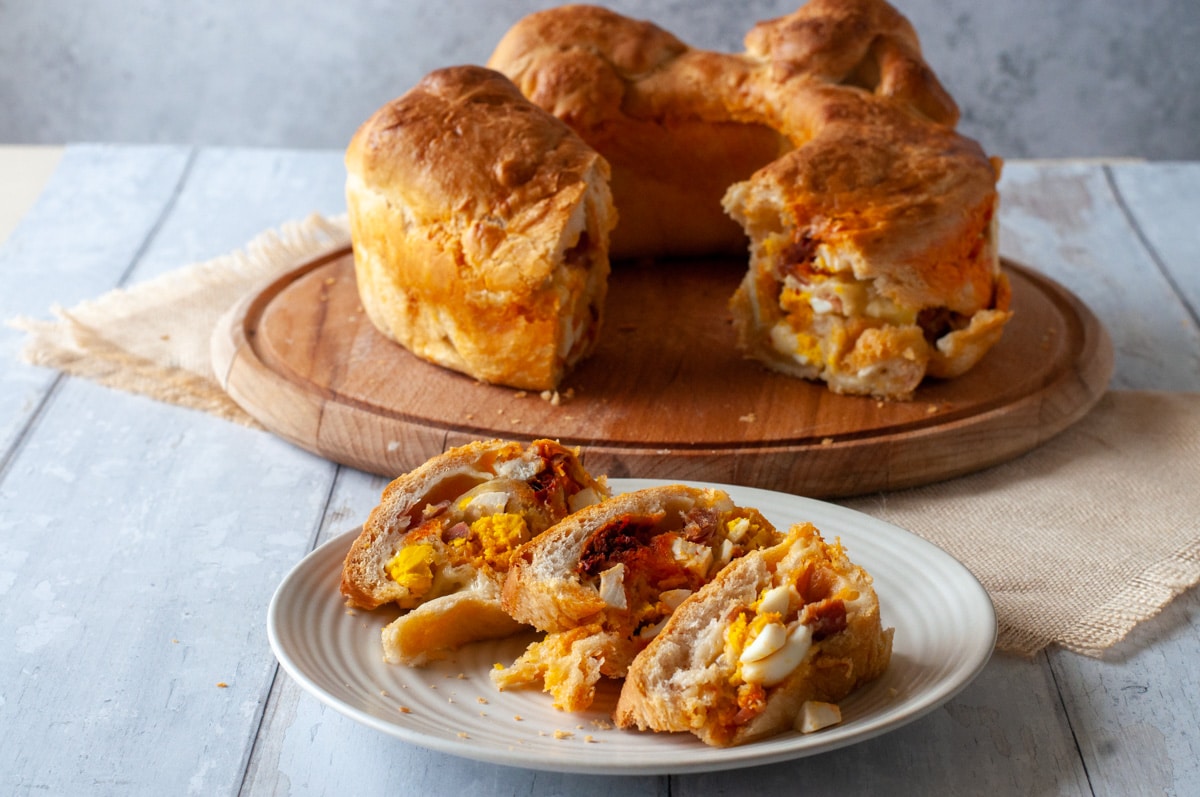
Ingredients
For the Dough:
- Flour 0 or All-Purpose Flour: For optimal texture, it is best to use Caputo Nuvola, specifically designed for pizza. All-purpose flour is a suitable substitute, providing the gluten structure necessary for the dough.
- Fresh lukewarm Water: The precise water-to-flour ratio is crucial for achieving a soft, pliable dough.
- Lard: a little lard adds richness and enhances the flakiness of the dough, contributing to its flavor profile.
- Active dry Yeast: dry yeast is more stable than fresh yeast and it ensures the dough rises properly.
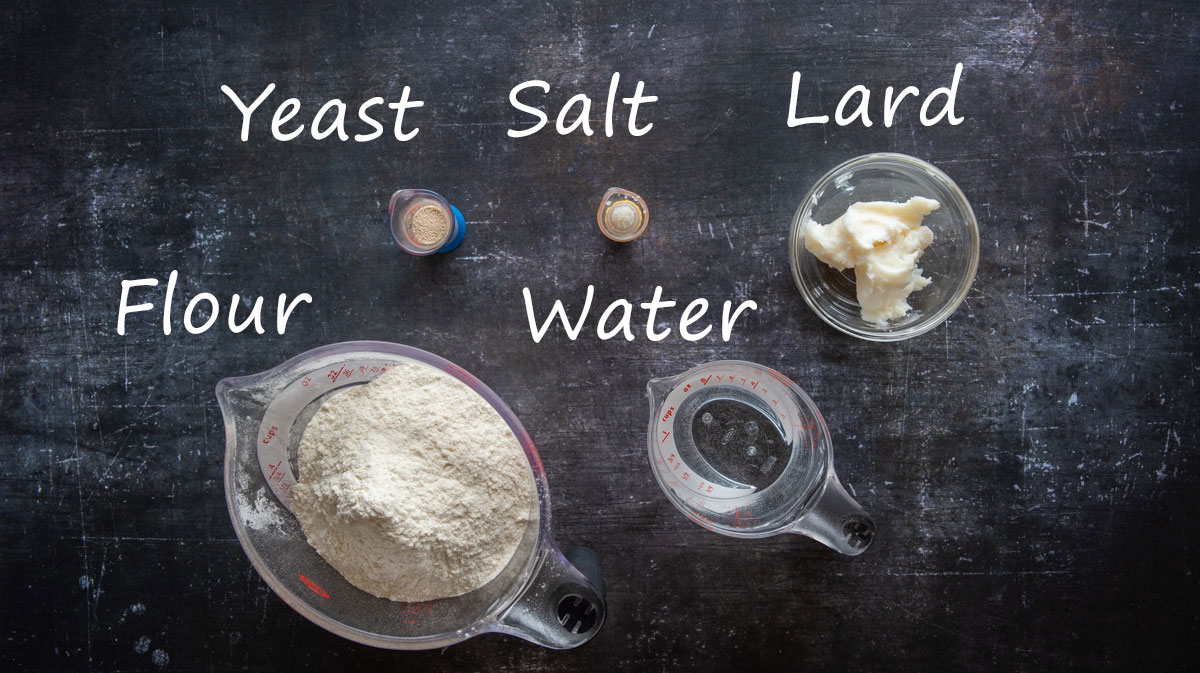
For the Stuffing:
These are the ingredients I used but feel free to change them and substitute:
- Provola or Provolone cheese: Offers a sharp, distinctive flavor and creamy texture, enriching the filling.
- Ricotta Salata, Pecorino Romano, or Parmesan cheese: Used for their salty, umami qualities. Ricotta Salata adds a mild saltiness and firm texture, while Pecorino and Parmesan bring a nutty, bold flavor.
- Bacon: Provides a smoky richness, adding depth to the dish.
- Ham or Mortadella: Contributes a unique, cured taste that complements the other ingredients.
- Fresh Raw Eggs : Essential for the traditional decoration, symbolizing the crown of thorns, and enriching the overall dish.
- 'Nduja: A spicy, spreadable salami from Calabria, adds a piquant kick and creamy texture, introducing an exciting layer of flavor.
- Salt
An Extra Egg for the Egg Wash: Used to brush the top of the Casatiello before baking, giving it a beautiful, glossy finish.

Instructions
The dough
This Casatiello dough is made using the no-knead bread technique, which employs a long fermentation period rather than kneading to develop the gluten strands essential for the bread's texture.
Therefore, you need to make the dough the day before.
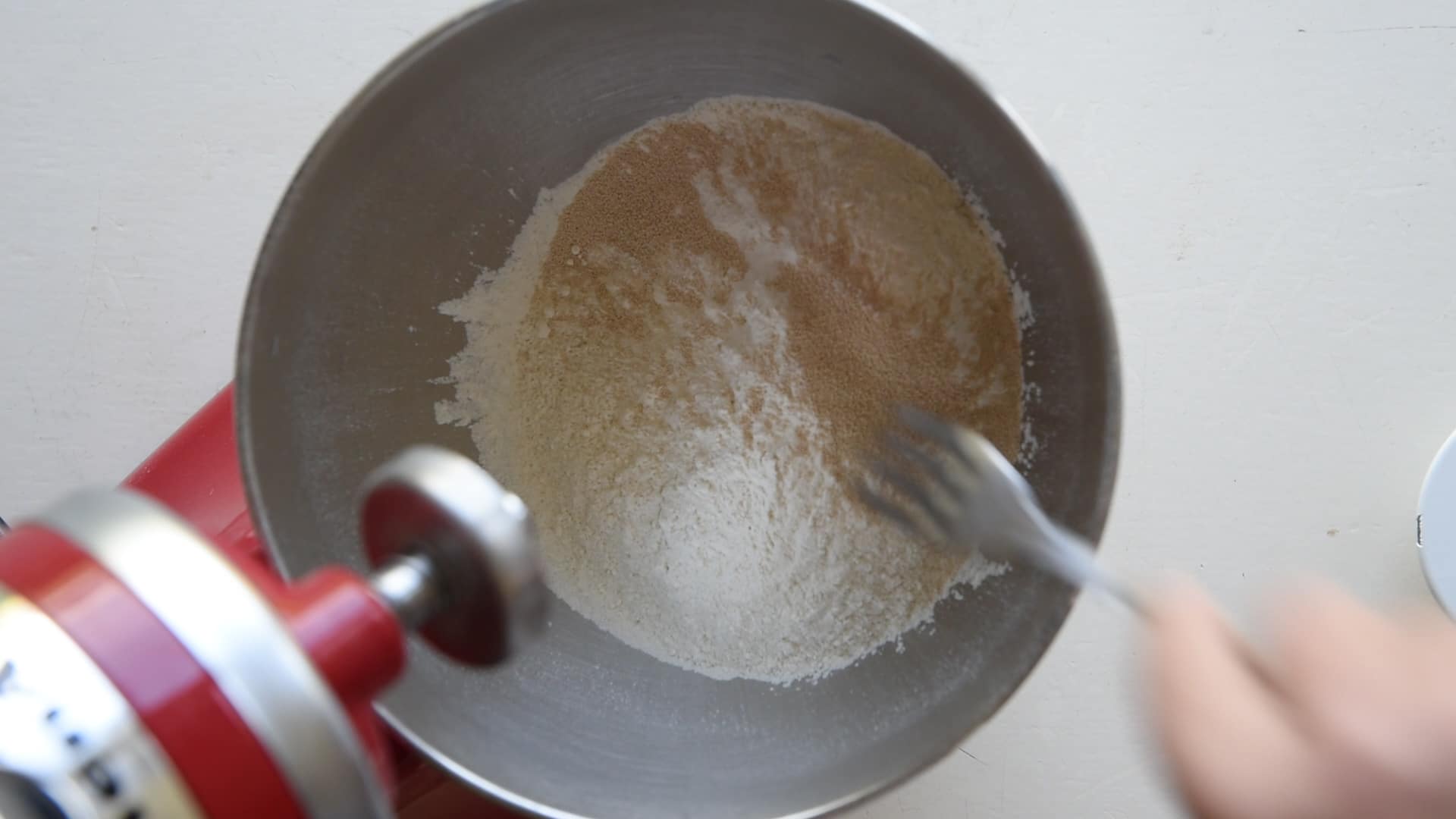
- Combine the flour and dry yeast in a stand mixer's bowl.

- Incorporate 80% of the water and stir.
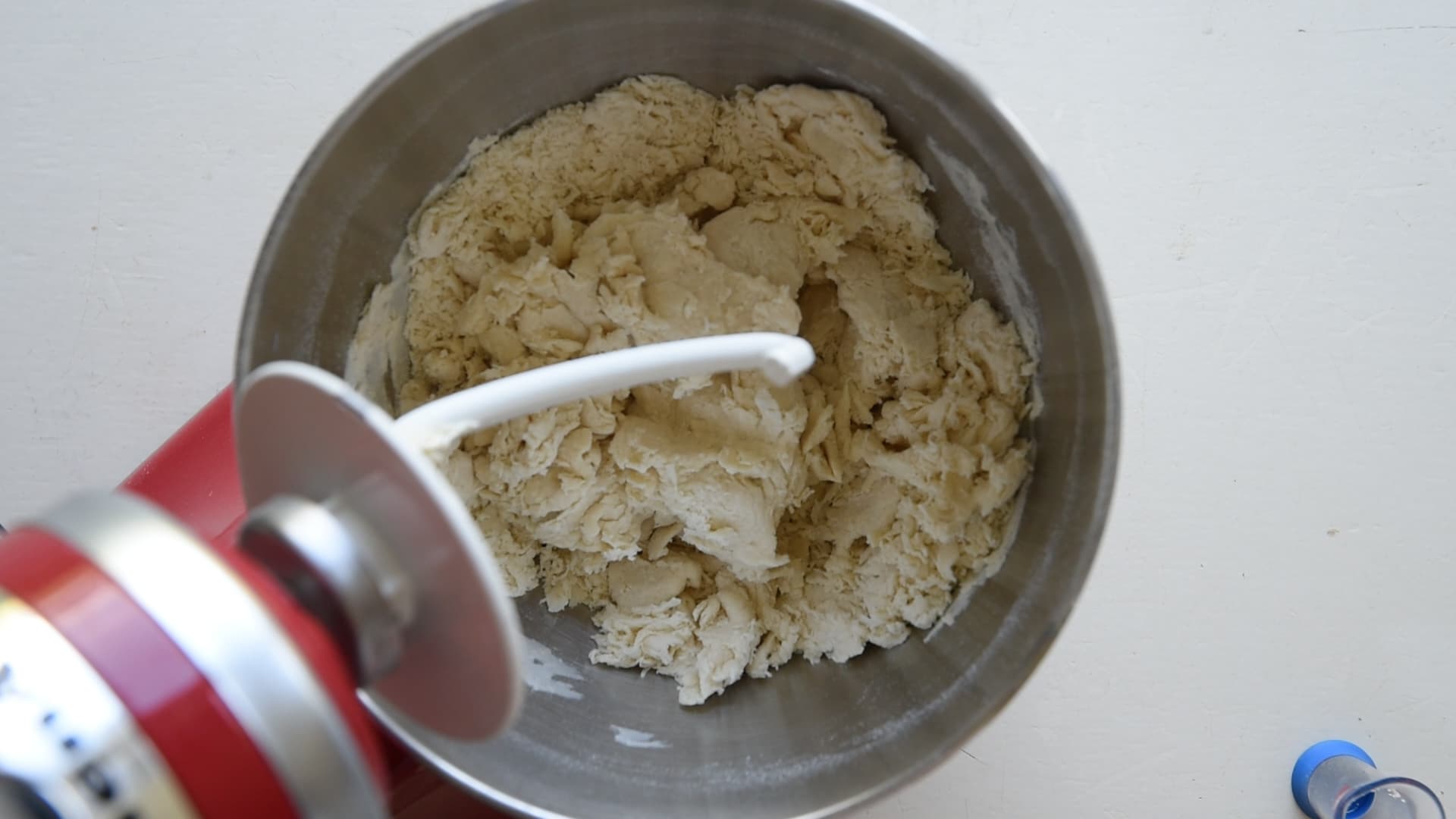
- Allow to rest for 15 minutes, enabling the yeast to activate.
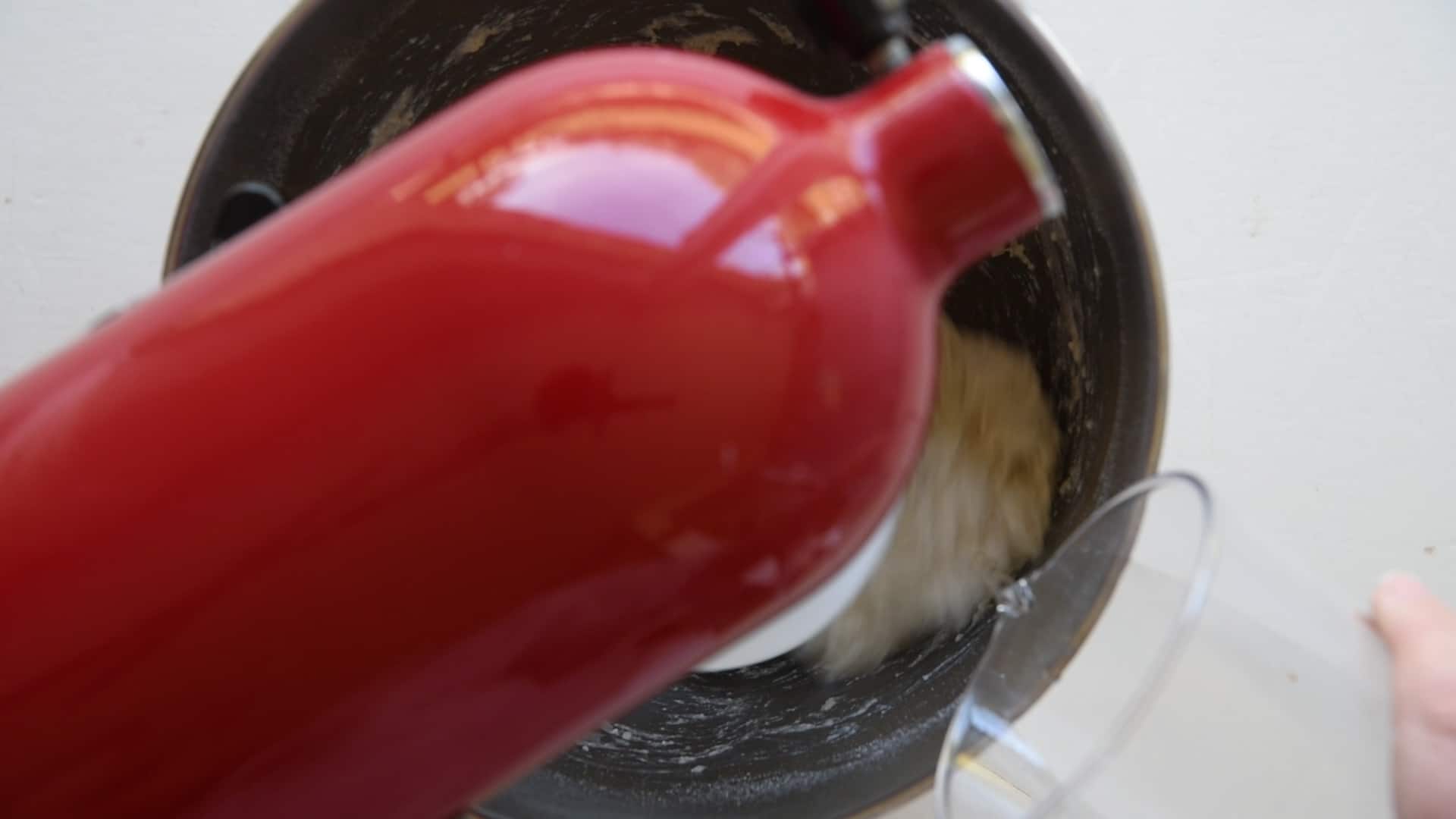
- Using the dough hook, begin mixing at low speed and slowly add the remaining water, then proceed to knead.
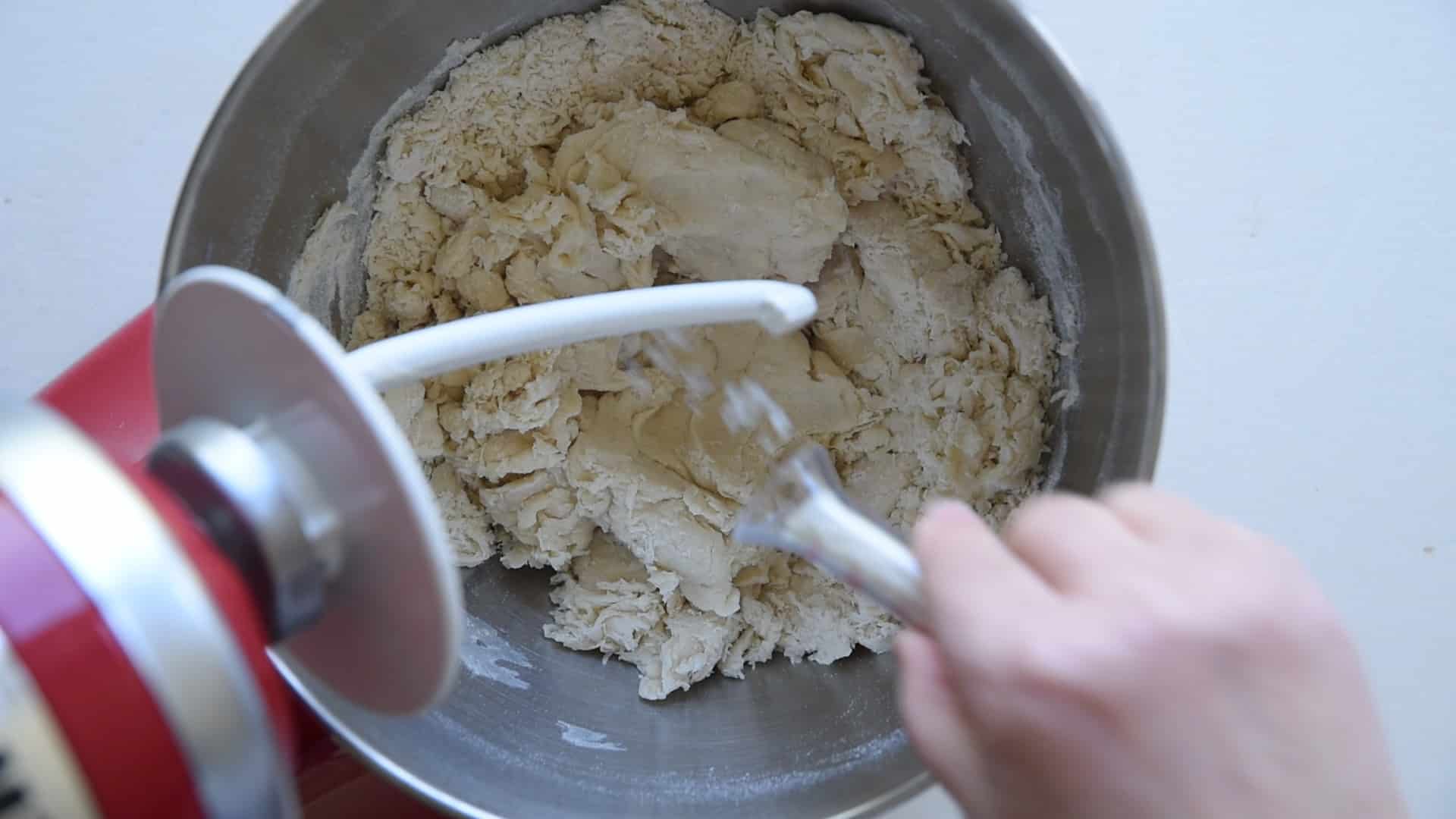
- Introduce the salt and continue kneading until it is fully integrated.
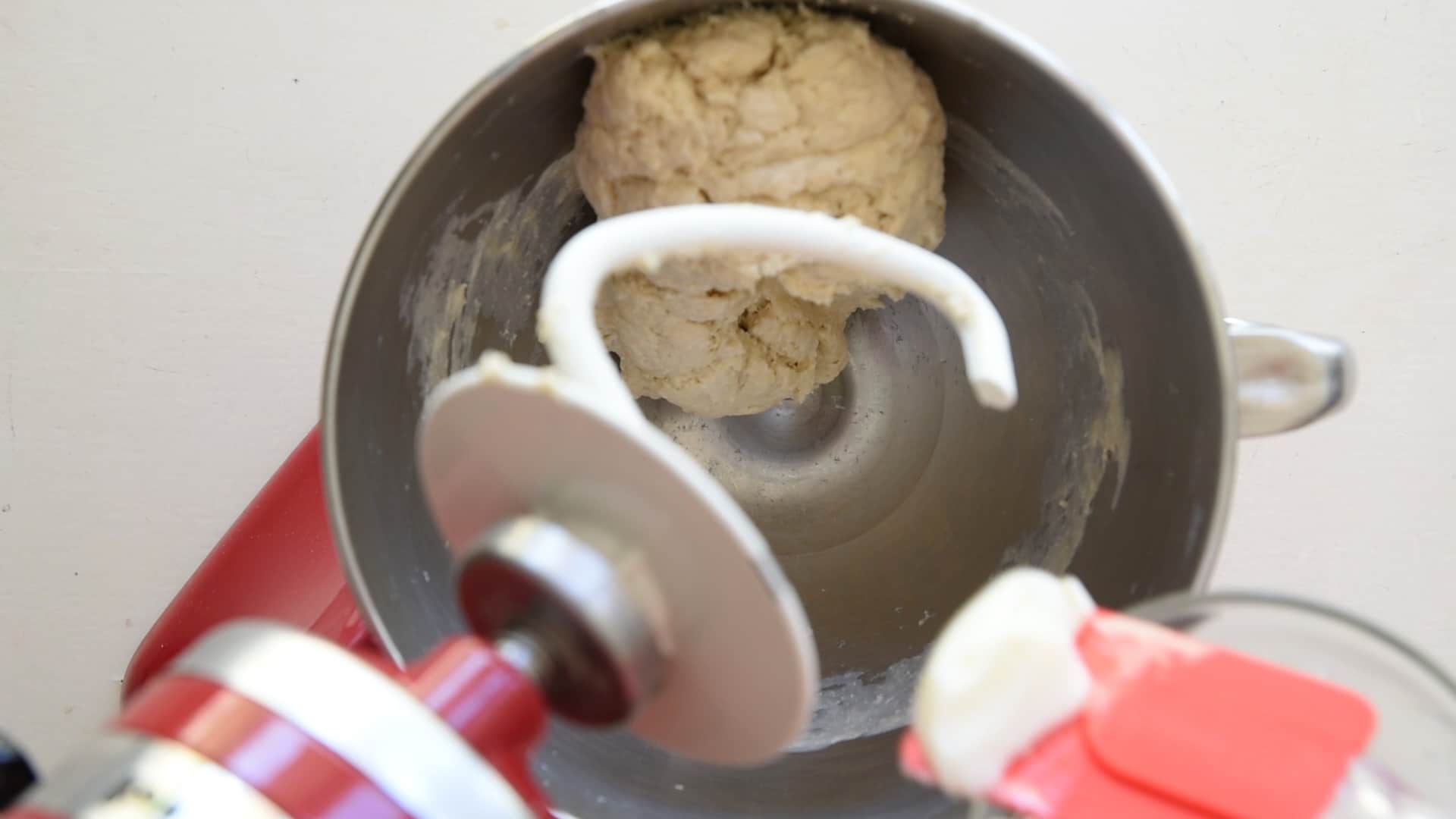
- Blend in the lard until it is completely absorbed into the dough.
First Leavening
- Allow the dough to rise for 1 hour in a warm spot, covered.

Alternative with a Bread machine
Up to this point, you can utilize a bread machine set to the DOUGH setting, which manages the mixing and kneading but stops short of baking. For specific instructions, refer to your bread machine's manual.
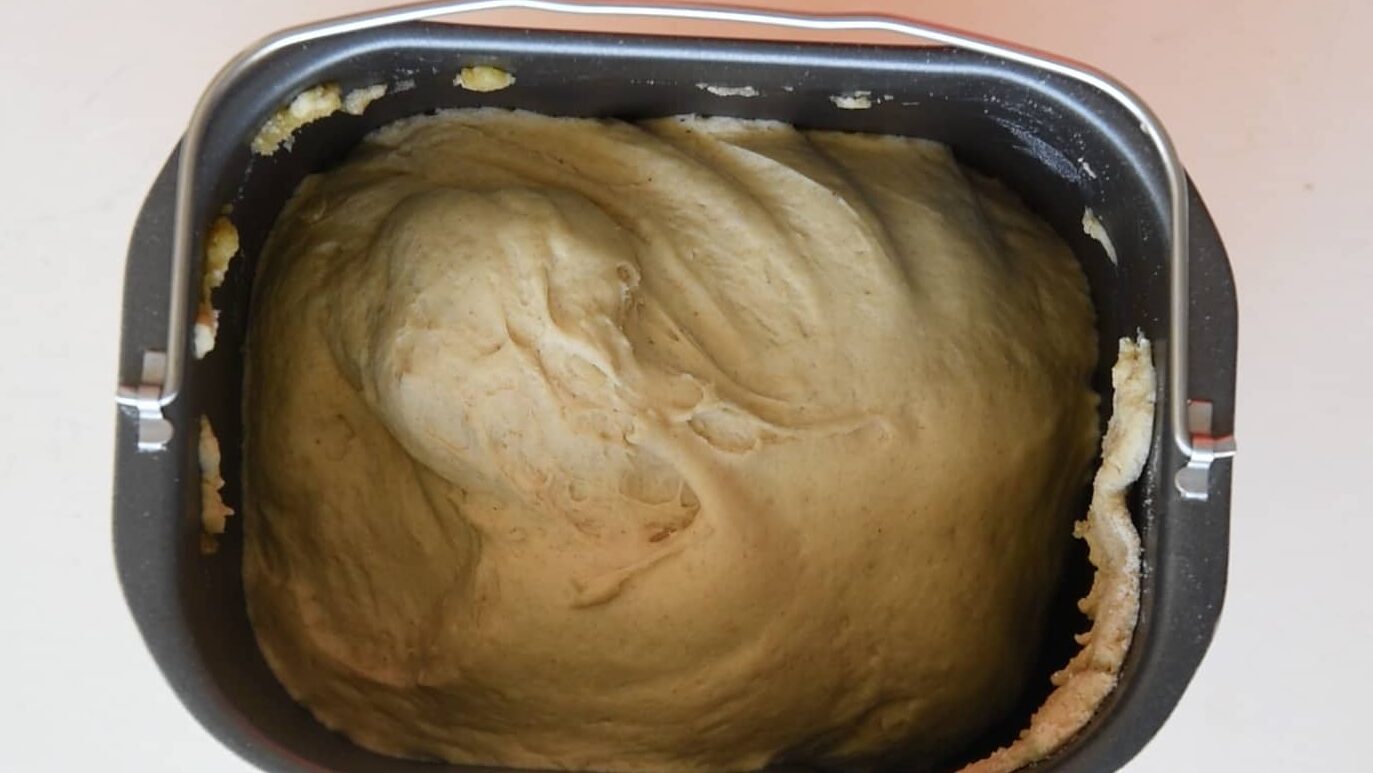
Reinforcement Folds
Reinforcement folds are crucial for aligning gluten strands, enhancing the dough's structure and elasticity, which leads to a better volume and texture in the final bread.

- Transfer the dough onto a well-floured work surface and press the dough down with your fingers.
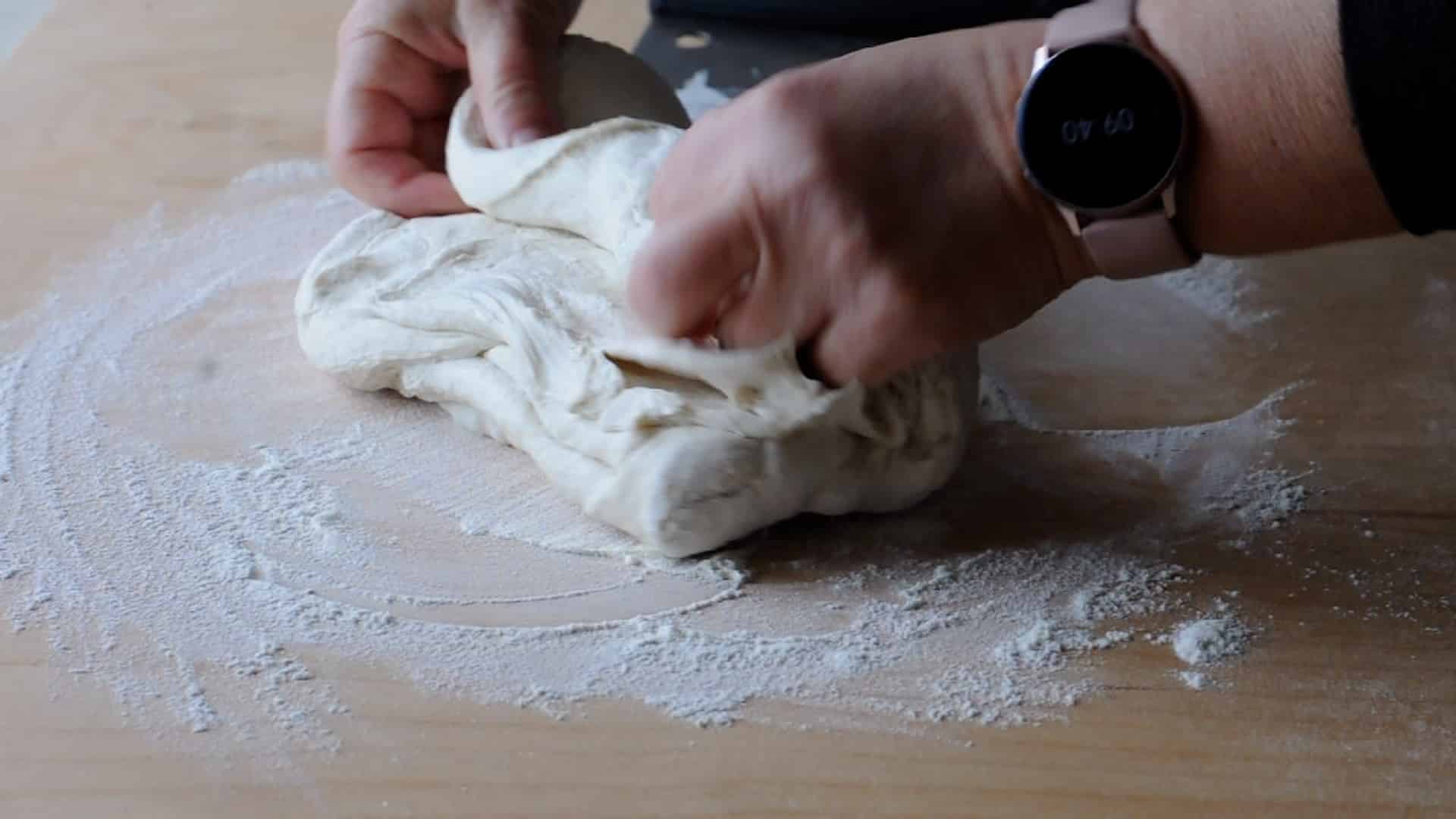
- Fold the upper section of the dough toward the center.

- Turn the dough 90 degrees and execute another fold.
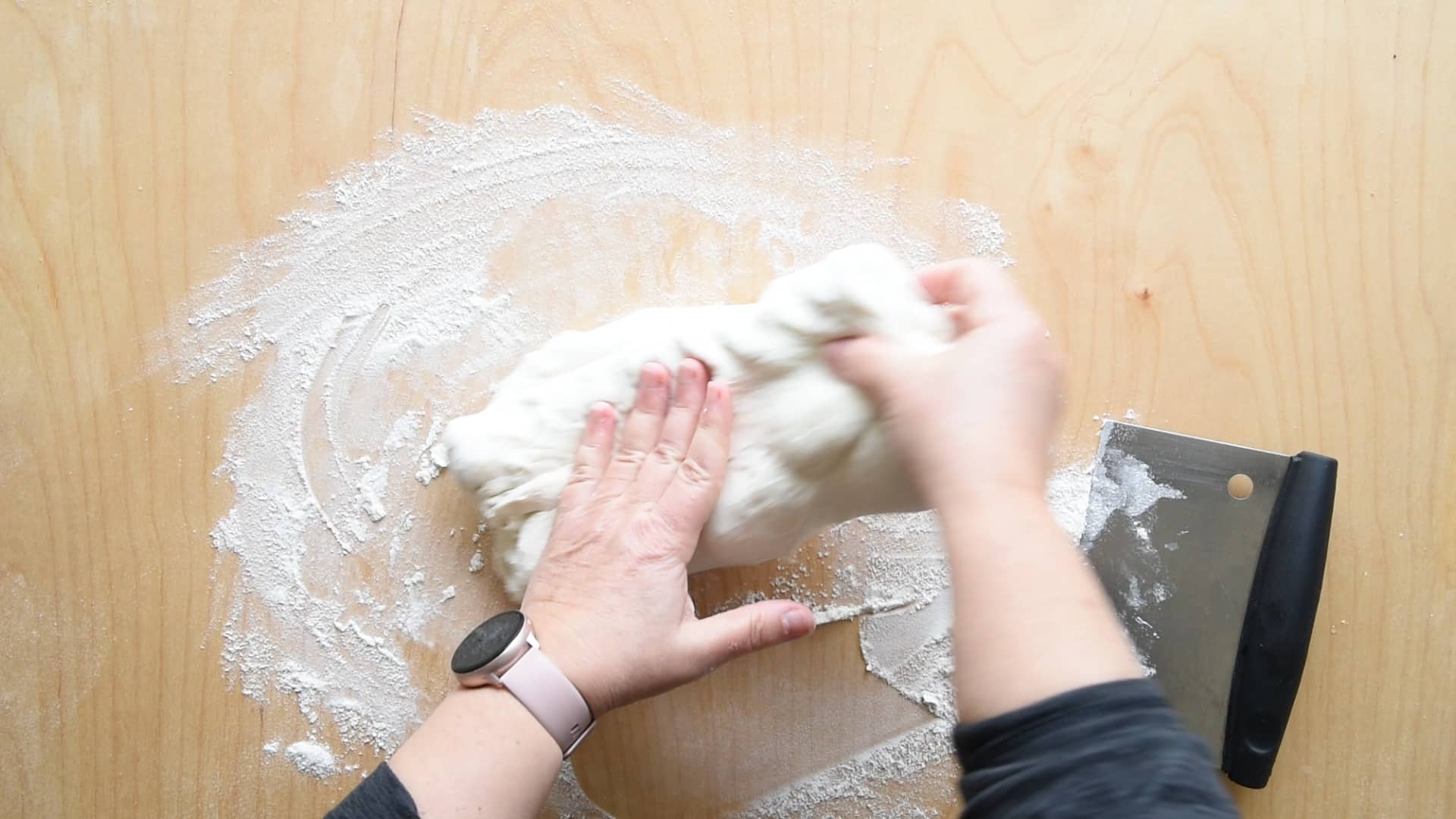
- Continue this fold-and-turn procedure three times altogether.
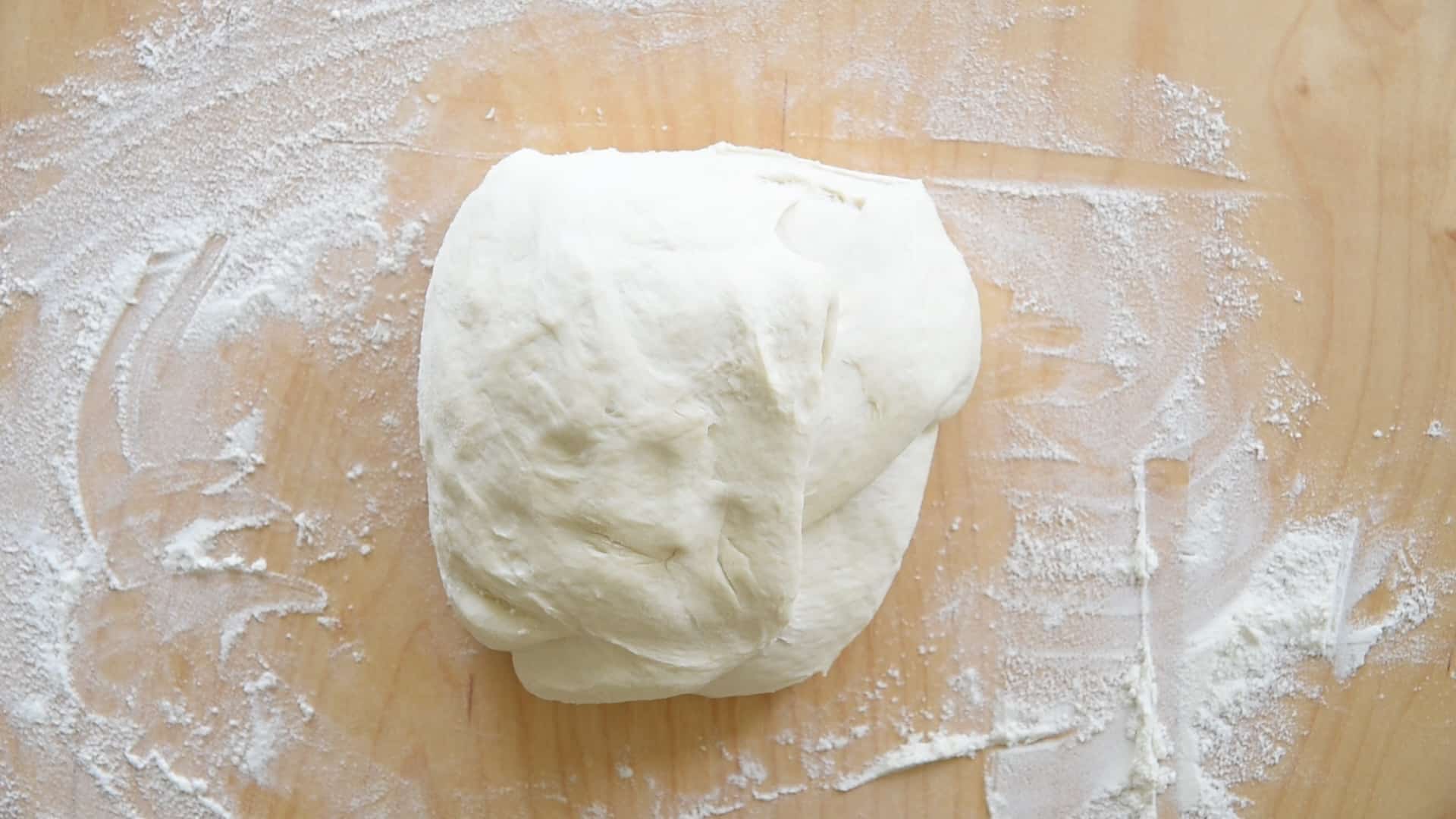
- Once the folds are finished, allow the dough to rest for 20 minutes in a warm spot.

- Repeat the 20-minute resting period twice, giving the dough time to relax and the gluten to fully develop.
Check the video in the recipe card for more visual.
Overnight Fermentation
- Transfer the dough into a large, oiled container that is airtight.
- Store in the refrigerator for 12 to 24 hours.
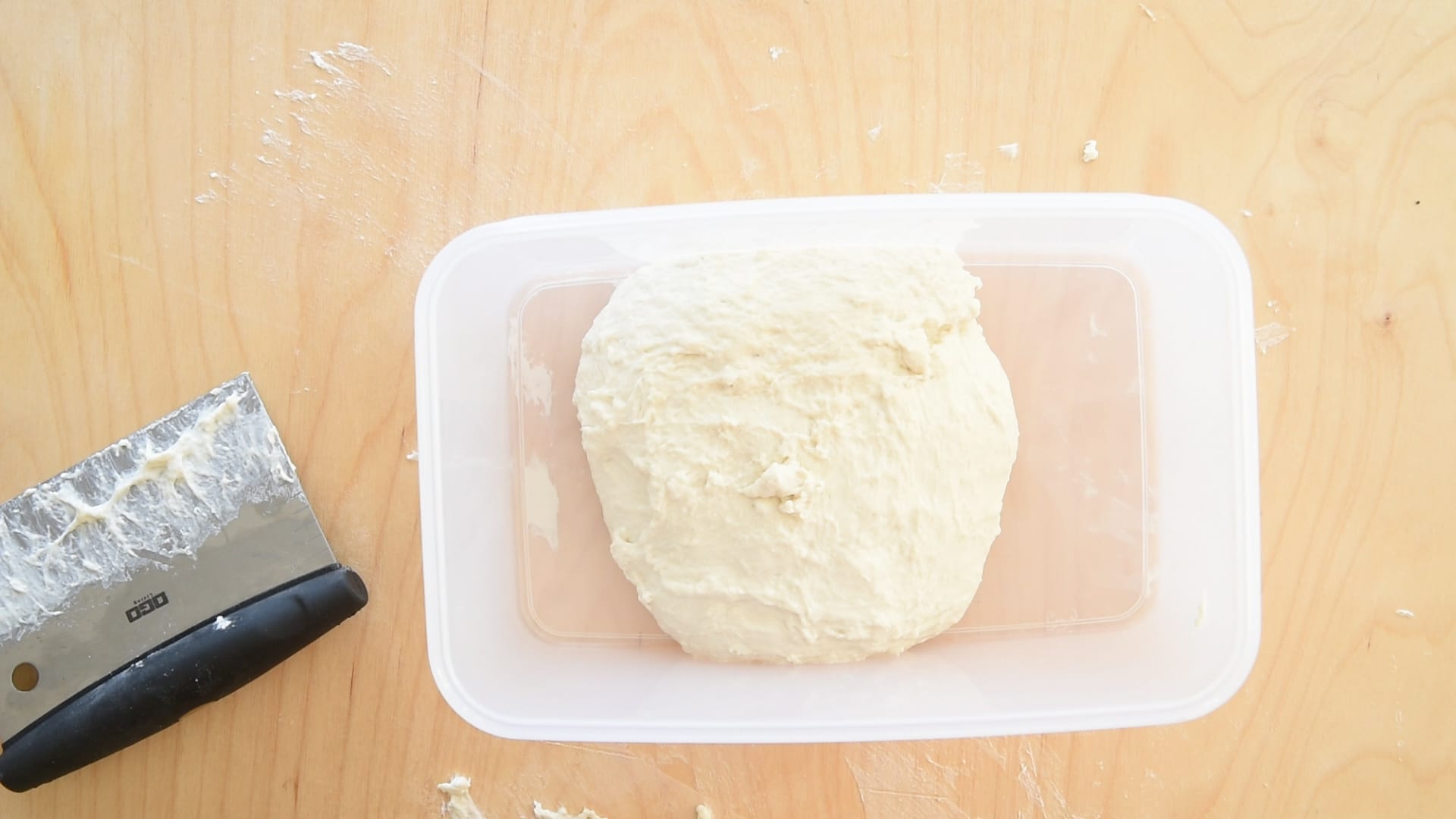
The next day
- After refrigeration, allow the dough to sit at room temperature for 30 minutes, enhancing its texture and making it easier to work with.
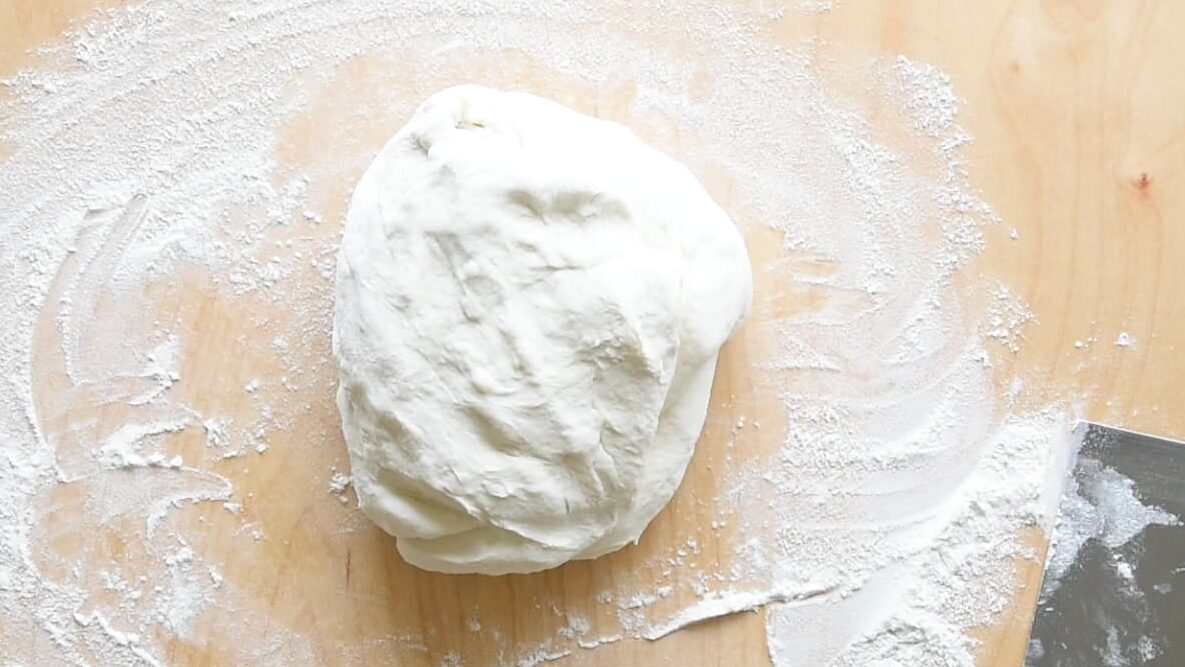
Preparing the Casatiello or Tortano
To show the difference between the two I am making the half on the left a Casatiello and the half on the right a Tortano
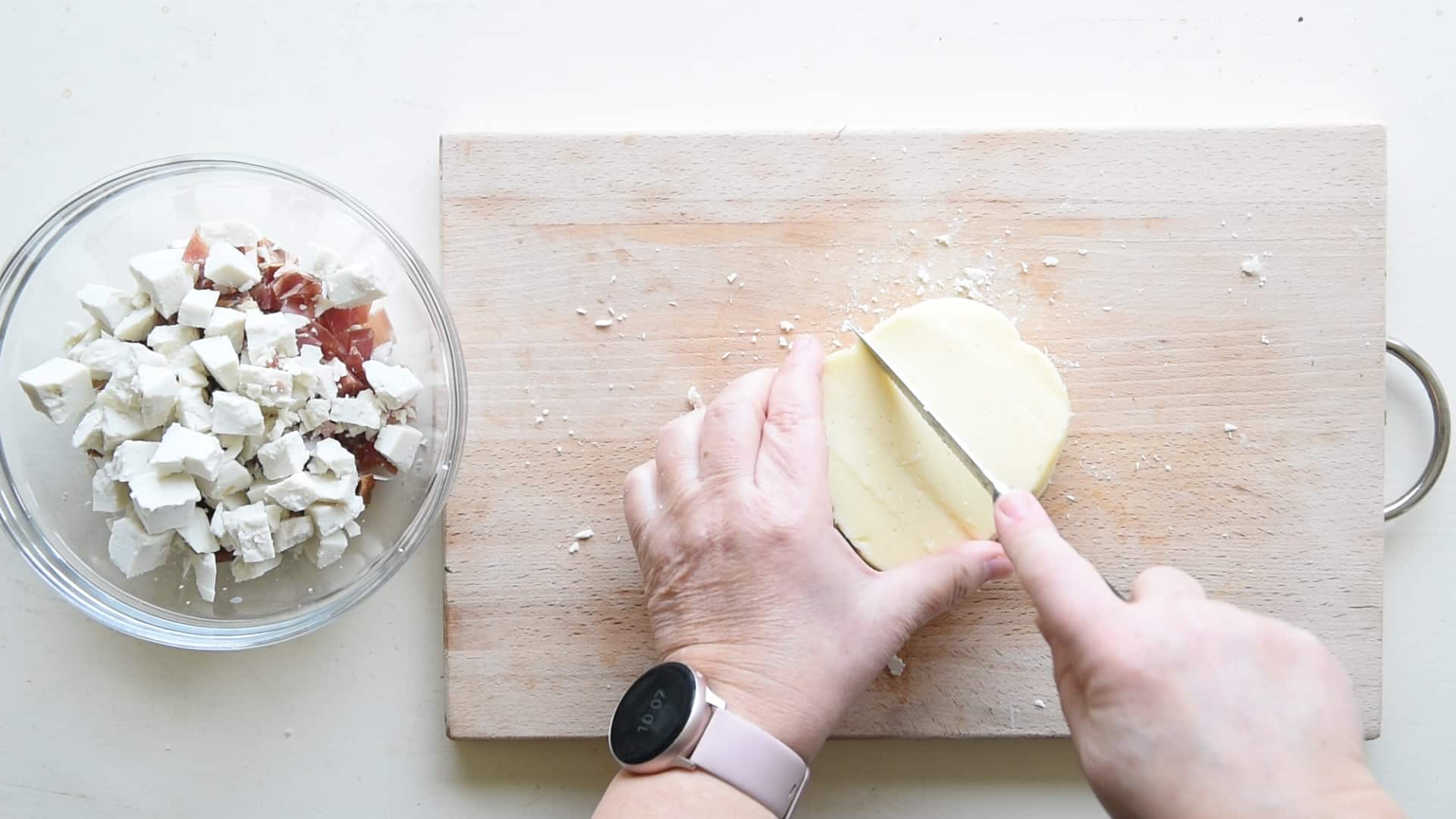
- Chop the various ingredients for the filling in small pieces.
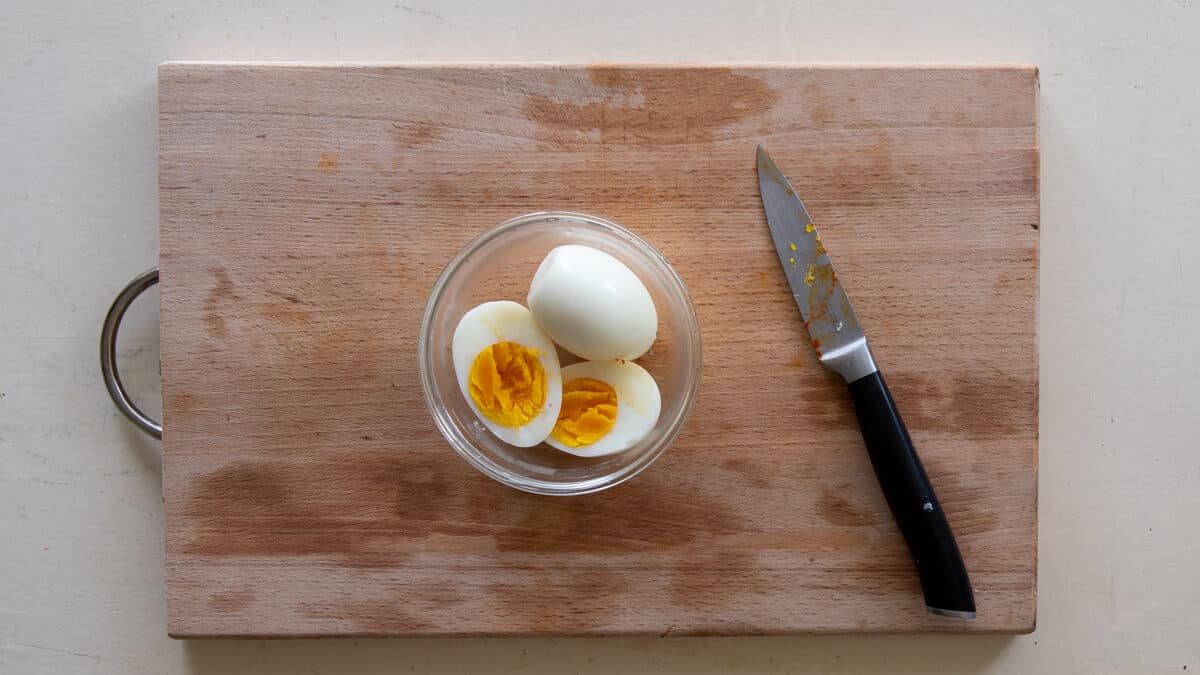
- For Tortano, add chopped hard-boiled eggs to the rest of the filling ingredients.
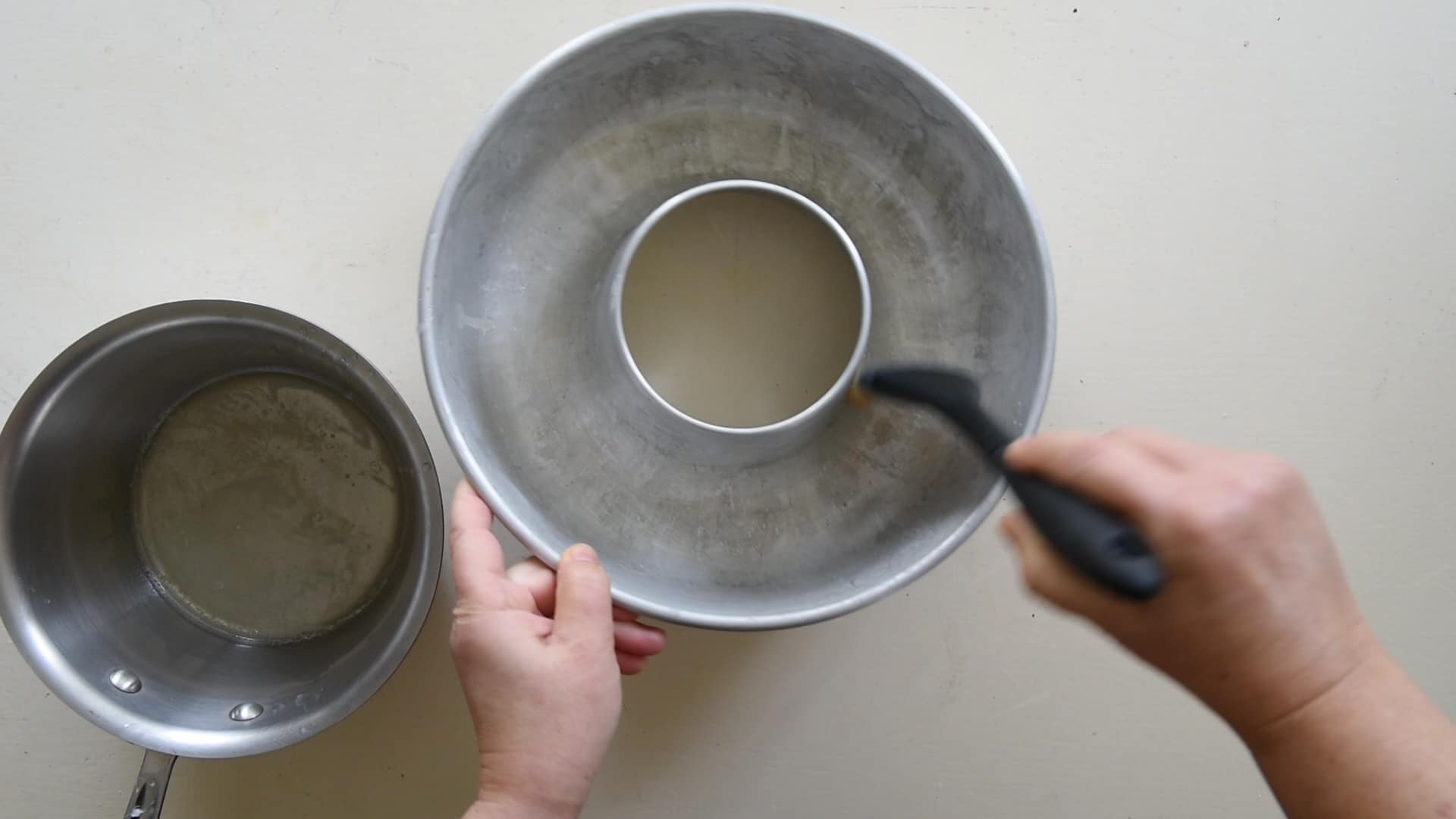
- Grease a round pan with a center hole with lard (for this recipe, I used a pan with 12 in - 30 cm in diameter)
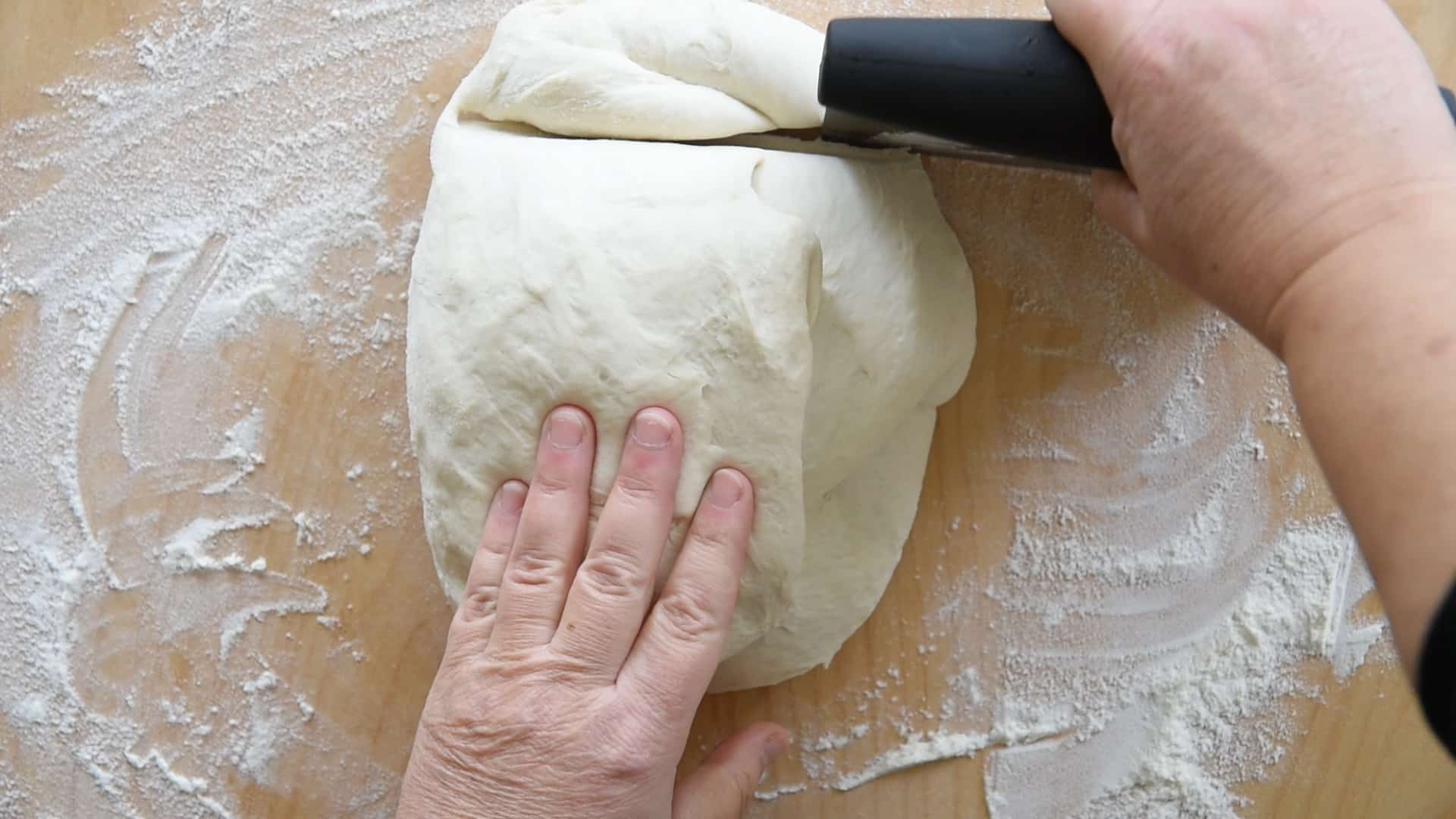
- Dust a work surface with flour and set aside a small piece of dough for decorating the Casatiello later.
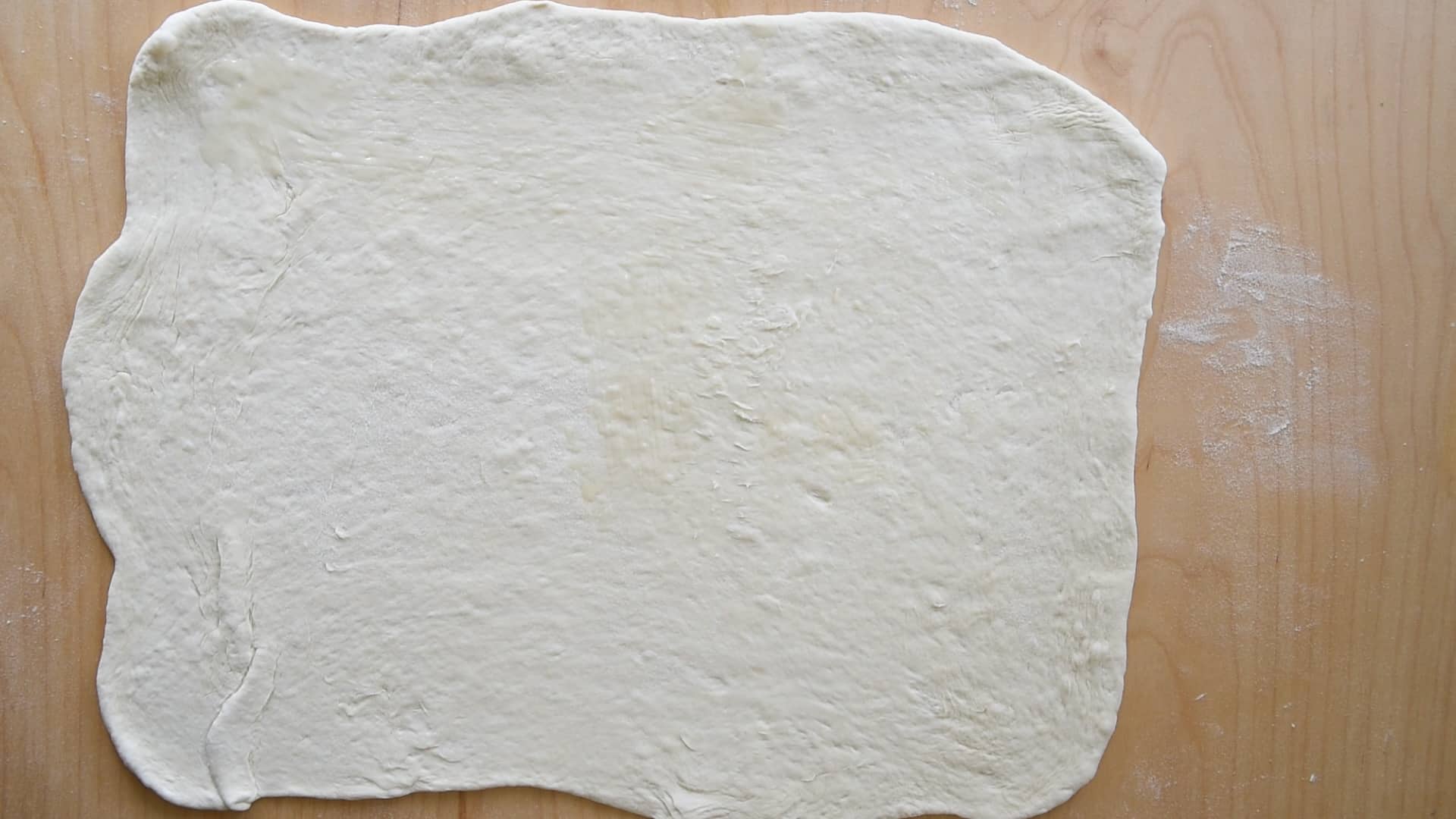
- Roll out the remaining dough with a rolling pin into a rectangle on the floured surface. Aim for the longer side to be roughly the same as the pan's circumference.

- With a pastry brush, spread melted lard over the dough
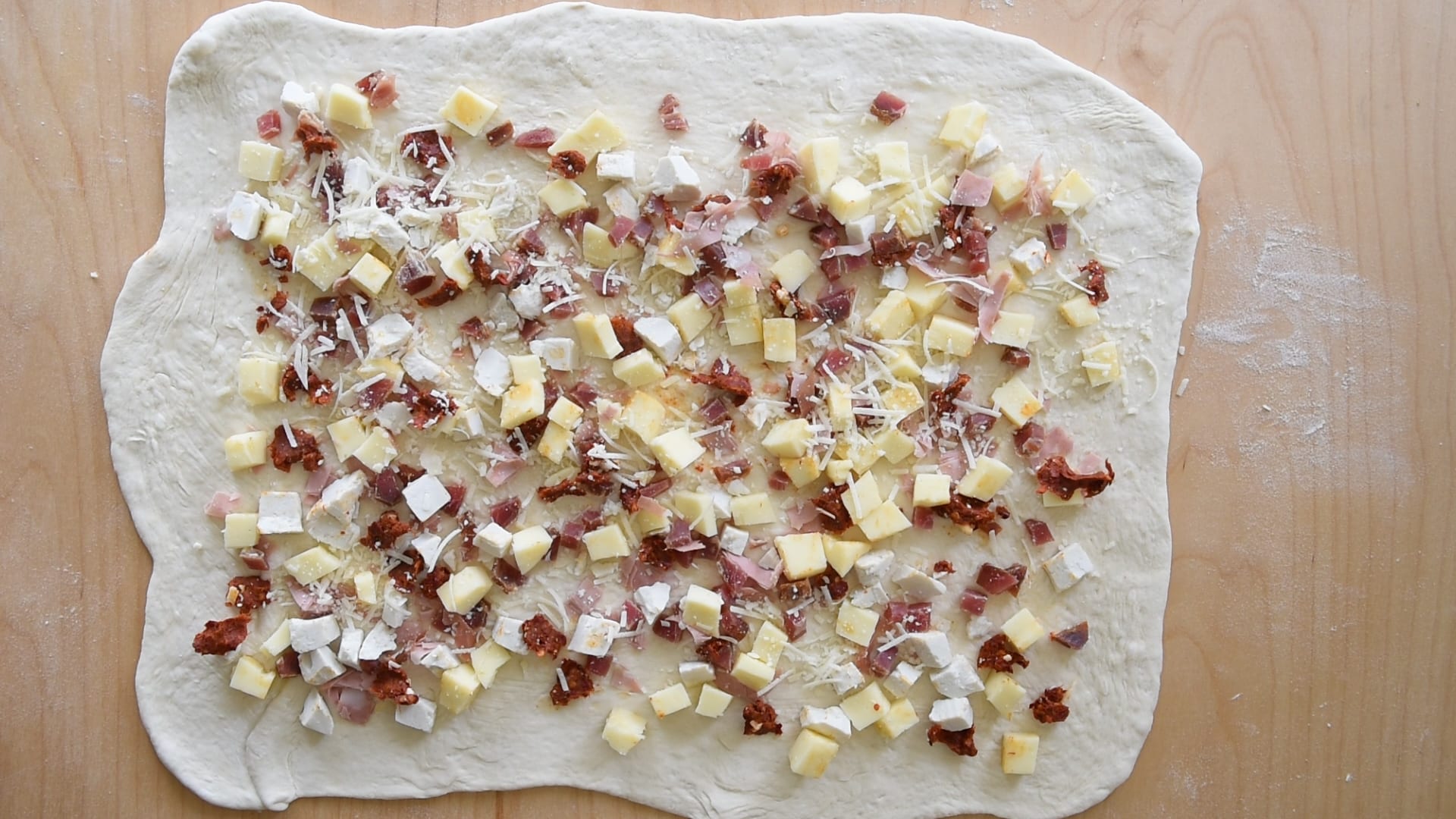
- Evenly distribute the filling ingredients over the dough.

- For the Tortano add also the boiled eggs

- Roll the dough tightly from the long edge, and apply melted lard as you go.

- Place the rolled dough in the prepared cake pan, forming a circle.
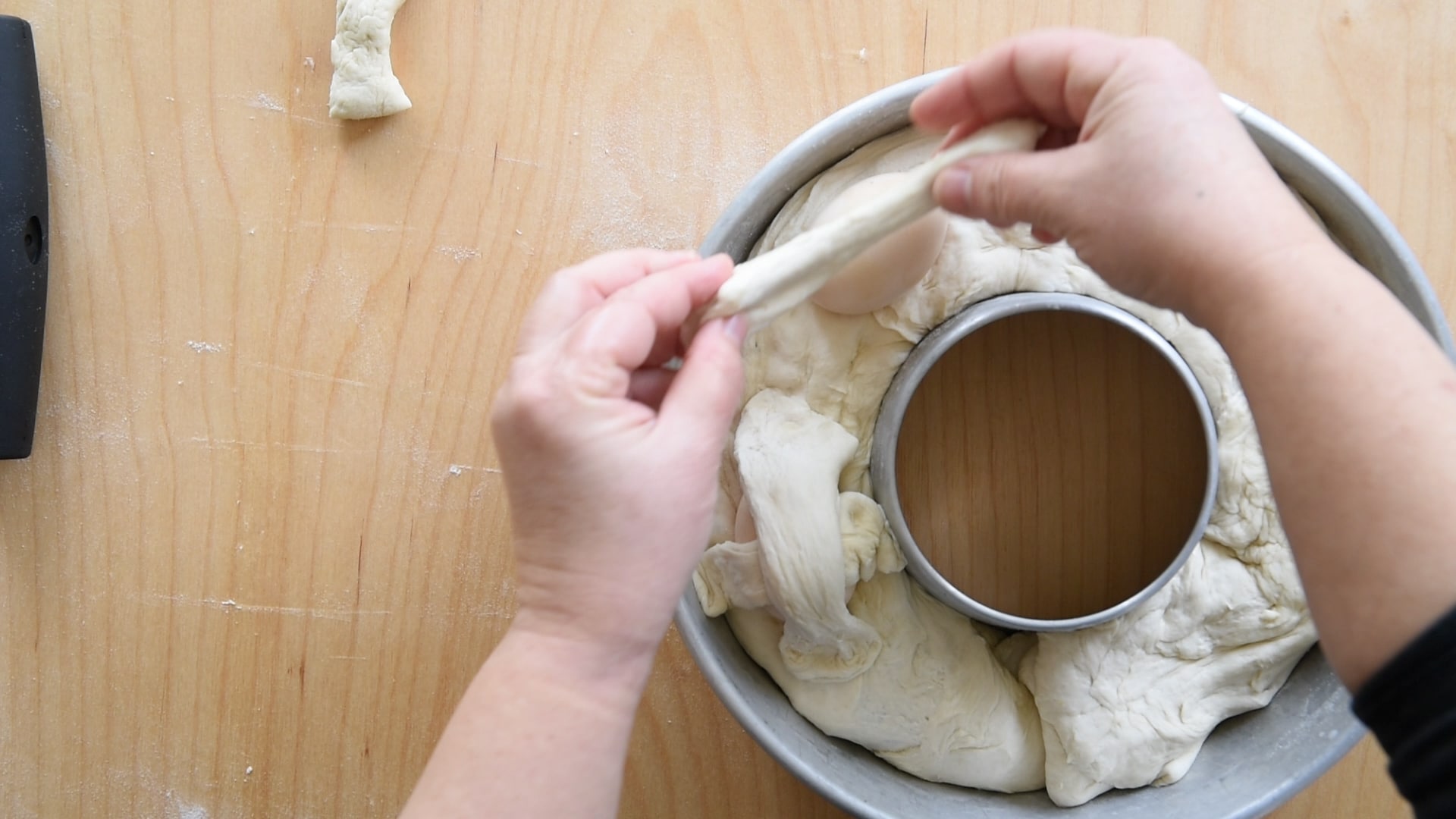
- For the Casatiello, position the raw eggs on top of the dough, using the reserved dough to secure the eggs with two strips.
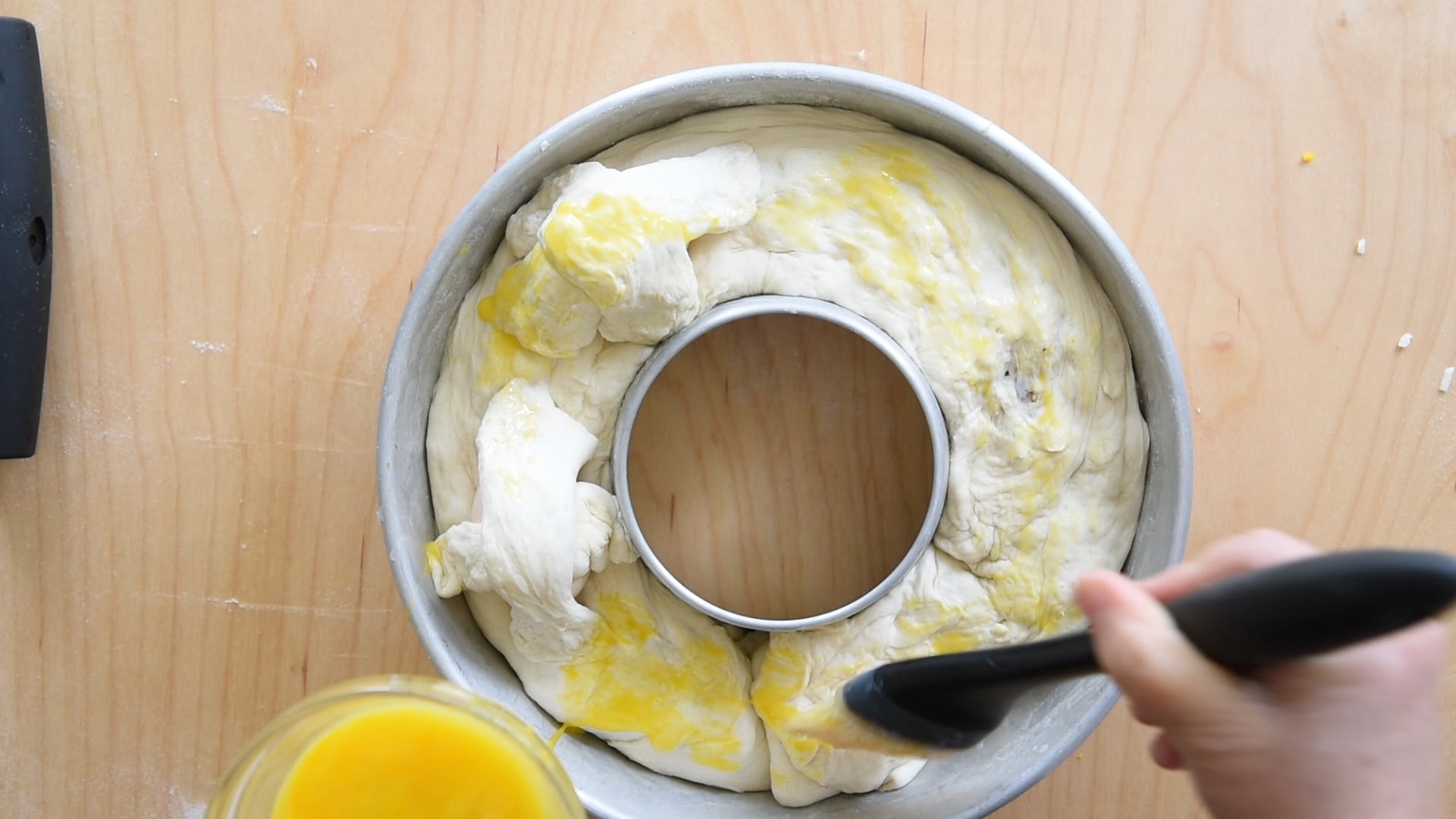
- Brush the top of the bread with egg wash to give it a nice colour

- Let the dough rise for 2 hours in a warm place.

- Preheat the oven to 355°F (180°C) and bake for one hour until golden brown.
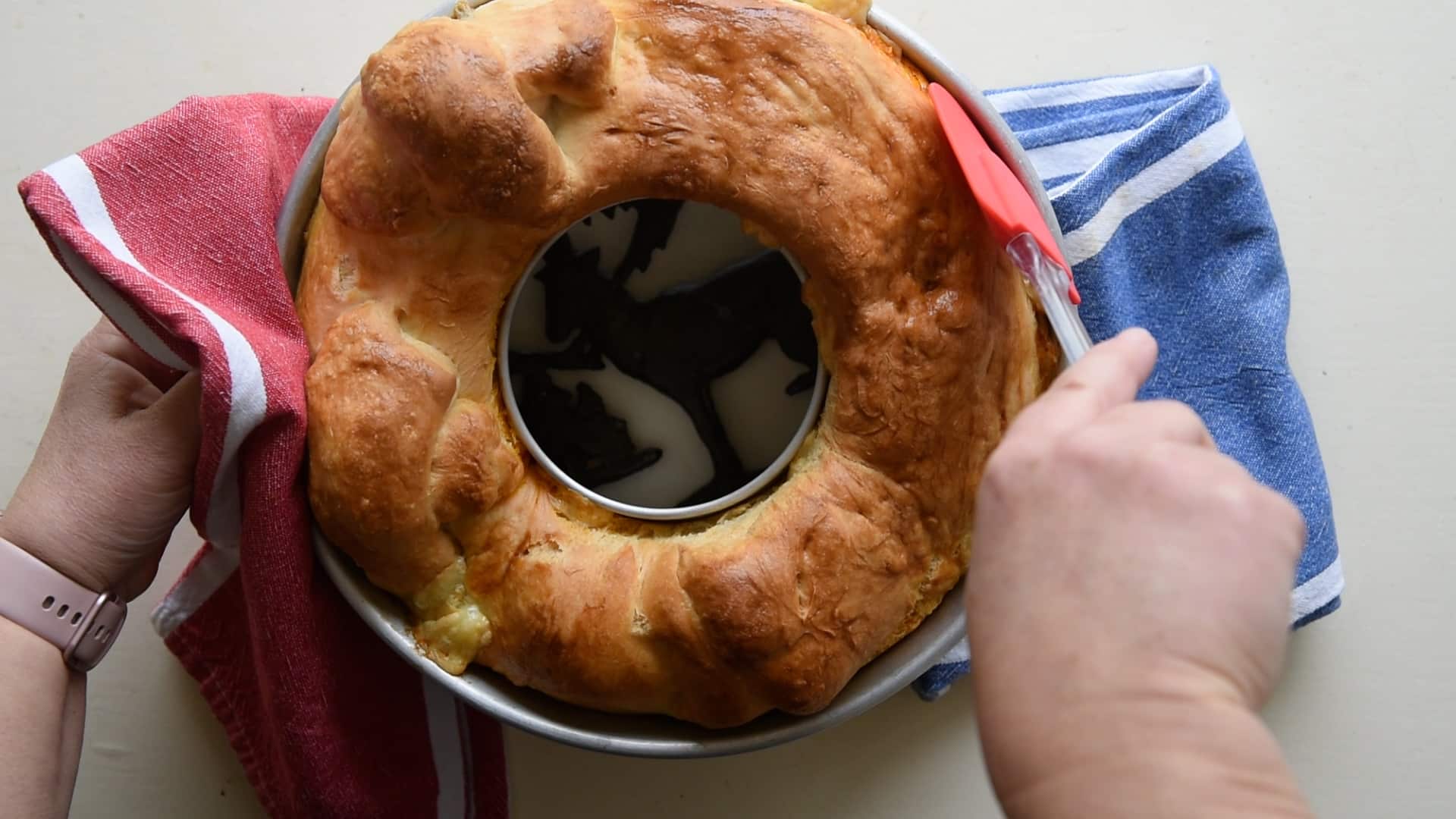
- After baking, let it cool in the pan for at least 15 minutes turning it over on a serving dish.
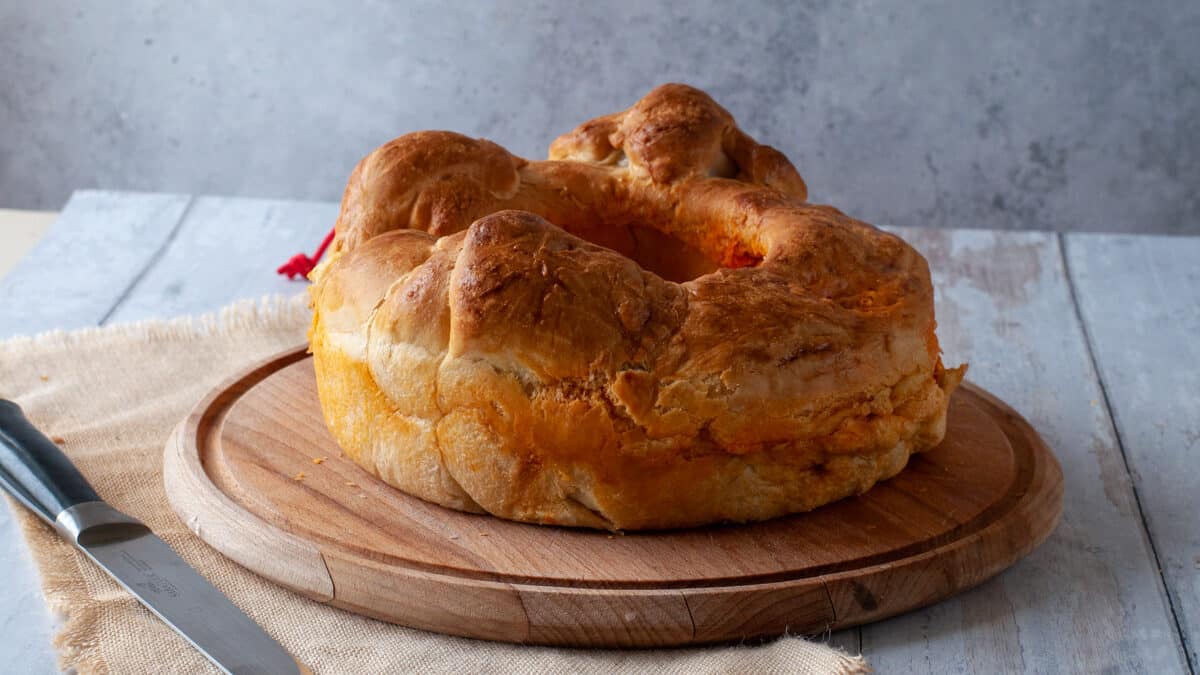
- Loosen the edges with a spatula and turn it over on a serving dish.
Serving it
This traditional Italian bread is ideally served on Easter Monday when Italians enjoy picnics outdoors.
Its hearty and rich filling makes it a perfect addition to a buffet table. It offers a savory option that pairs wonderfully with the day's festive spirit.
Additionally, any vegetable stew makes the perfect side dish to accompany it, adding a fresh and vibrant contrast to the rich flavors of the bread.
Here are some side dishes you can serve it with:
One of the significant advantages of this dish is that it can be prepared ahead of time, allowing the flavors to meld together and reducing stress on the day of the event.
Whether you plan to enjoy it under the spring sun at a picnic or as part of a lavish feast, this bread will surely be a hit.
Its portability and ease of serving make it an excellent choice for gatherings with friends and family, celebrating the joy and renewal that Easter brings.

Storage
Proper storage is key to maintaining the freshness and flavor of Casatiello or Tortano.
Once cooled to room temperature, wrap the bread tightly in aluminum foil or plastic wrap to prevent it from drying out.
Keep it at room temperature for up to 2 days for short-term storage.
If you need to store it for longer, place the wrapped bread in the refrigerator, where it will stay fresh for up to a week.
For those who wish to extend its shelf life even further, Casatiello can be frozen once you remove the hard eggs on top.
Wrap the bread securely in a layer of plastic wrap, followed by a layer of aluminum foil to protect it from freezer burn.
Stored in the freezer, it can last for up to 3 months.
When you're ready to enjoy it, thaw the bread overnight in the refrigerator and then warm it in the oven at 350°F (175°C) for about 10 minutes or until heated through.
This will help restore its original texture and flavor, making it just as delicious as the day it was baked.

More Easter recipes
If you are making any of this Neapolitan Easter Bread Casatiello, leave your comment below I would like to hear from you. You can find more delicious ideas if you FOLLOW ME on Facebook, YouTube, or sign up to my newsletter.

Traditional Neapolitan Easter Bread Casatiello vs Tortano
Ingredients
Dough
Filling
- ½ cup Provola or Provolone
- ½ cup salted ricotta or Pecorino or Parmesan cheese
- ⅓ cup bacon or prosciutto
- ⅓ cup ham or mortadella
- 4 fresh eggs raw for the Casatiello and boiled for the Tortano
- 3 tablespoon Nduja optional
- 1 extra egg for brushing
Equipment
- Round pan with hole in middle 12 in - 30 cm
Instructions
Making the dough the day before
- For simplicity make the dough in the bread machine. Place all the ingredients in the bread machine and set the machine to DOUGH, no baking4 cups flour type 0, 1 ½ cups fresh water, ½ cup Lard, 2 tablespoon instant yeast, 1 teaspoon salt
- To make the dough with a stand mixer, follow the step-by-step instructions with images in the post and let it rest for one hour
Reinforcement Folds
- Transfer the dough onto a well-floured work surface and press the dough down with your fingers.
- Fold the upper section of the dough toward the center.
- Turn the dough 90 degrees and execute another fold.
- Continue this fold-and-turn procedure three times altogether.
- Once the folds are finished, allow the dough to rest for 20 minutes in a warm spot.
- Repeat the 20-minute resting period twice, giving the dough time to relax and the gluten to fully develop.
- Transfer the dough into a large, oiled container that is airtight and store in the refrigerator for 12 to 24 hours.
The next day
- After refrigeration, allow the dough to sit at room temperature for 30 minutes, enhancing its texture and making it easier to work with.
Preparing the Casatiello or Tortano
- Chop the various ingredients for the filling in small pieces.½ cup Provola, ½ cup salted ricotta, ⅓ cup bacon, ⅓ cup ham or mortadella, 3 tablespoon Nduja
- For Tortano, add chopped hard-boiled eggs to the rest of the filling ingredients.4 fresh eggs
- Grease a round pan with a center hole with lard (for this recipe, I used a pan with 12 in - 30 cm in diameter)
- Dust a work surface with flour and set aside a small piece of dough for decorating the Casatiello later.
- Roll out the remaining dough with a rolling pin into a rectangle on the floured surface. Aim for the longer side to be roughly the same as the pan's circumference.
- With a pastry brush, spread melted lard over the dough
- Evenly distribute the filling ingredients over the dough.
- For the Tortano add also the boiled eggs4 fresh eggs
- Roll the dough tightly from the long edge, and apply melted lard as you go.
- Place the rolled dough in the prepared cake pan, forming a circle.
- For the Casatiello, position the raw eggs on top of the dough, using the reserved dough to secure the eggs with two strips.4 fresh eggs
- Brush the top of the bread with egg wash to give it a nice colour1 extra egg for brushing
- Let the dough rise for 2 hours in a warm place.
- Preheat the oven to 355°F (180°C) and bake for one hour until golden brown.
- After baking, let it cool in the pan for at least 15 minutes turning it over on a serving dish.
- Loosen the edges with a spatula and turn it over on a serving dish.
Video
Notes
Nutrition
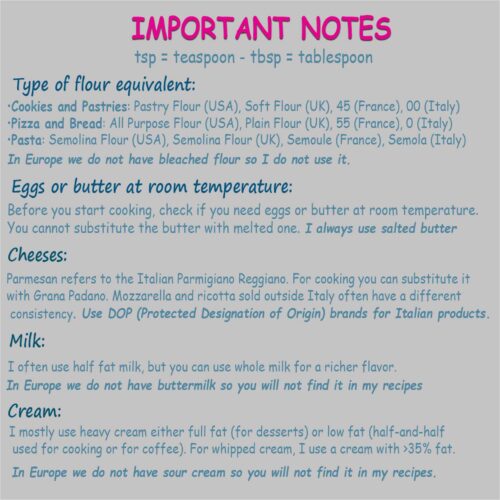







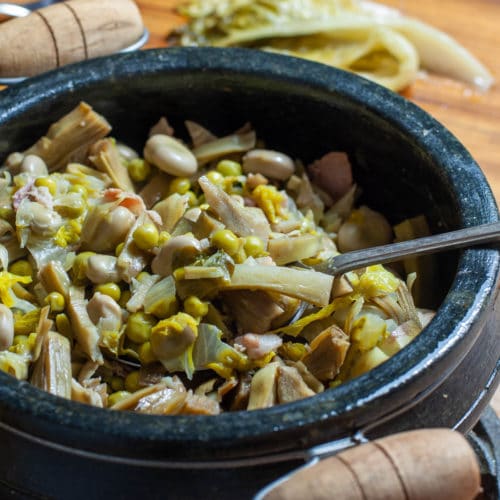



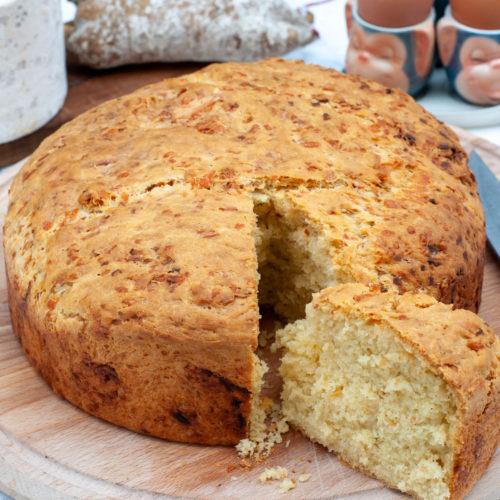

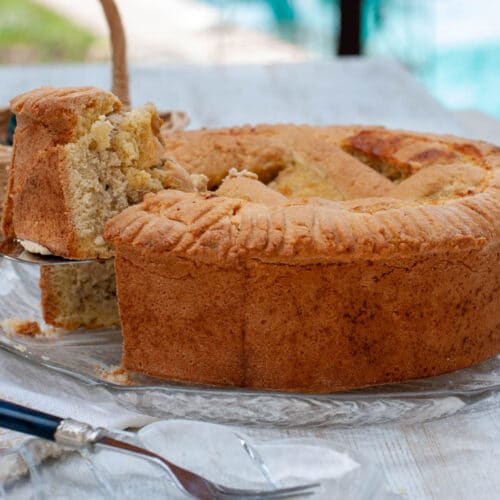
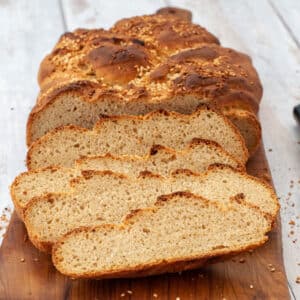



Leave a Reply